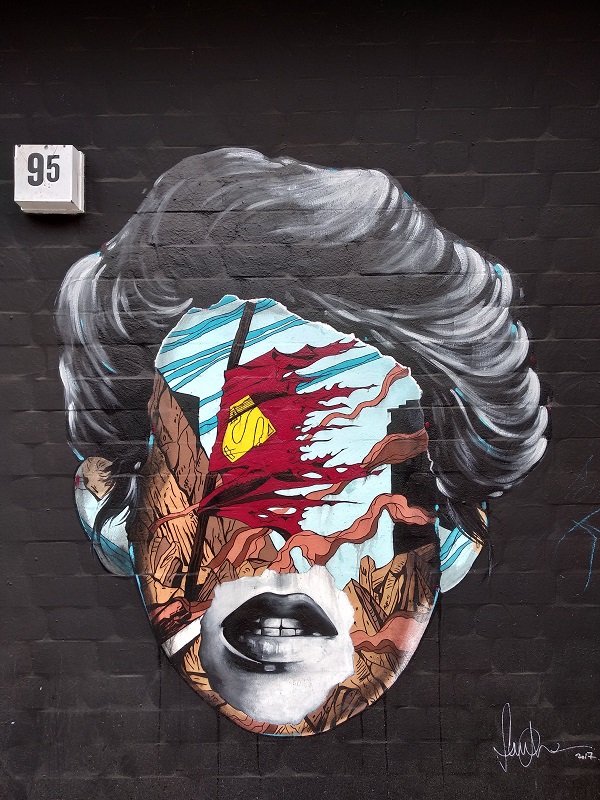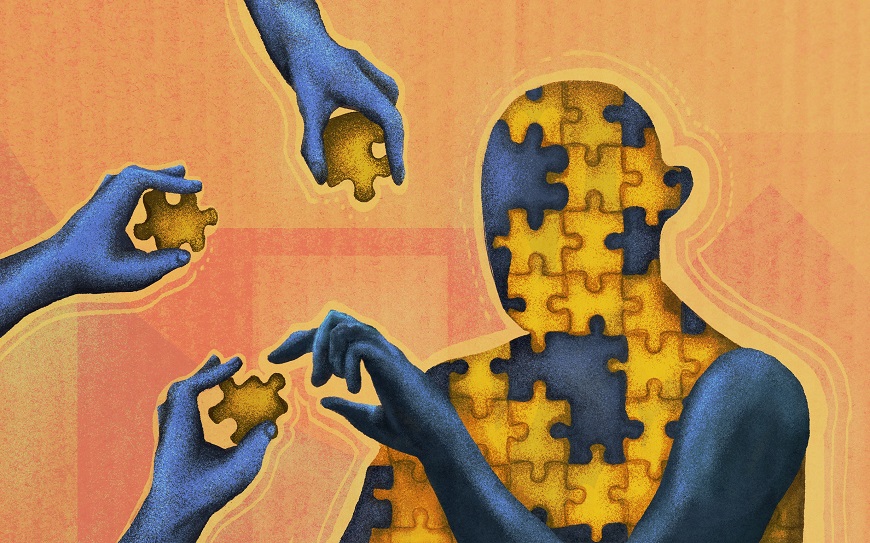Mental health in youth workers’ agenda?
by Jelena Ilić and Marko Pejović
06/12/2021
During 2017-18, about 50 000 young people contributed to the EU Youth Strategy 2019-2027 and the creation of 11 Youth Goals during the EU Youth Dialogue (Official Journal of the EU, 2018). One of the areas which they pointed to as challenging was their mental health and well-being (goal number 5), together with a need for a more inclusive, gender equality based, sustainable and green participative society with the same chances for quality learning and employment. All these are already priorities of the new Erasmus+ programme, except reacting to the need for better youth mental health. If young people expressed their need for mental health support and we see ourselves as actors in this area, then where can we find support for our work in this field?
Positioning mental health in youth work raises various questions, and this article deals with some of them. If mental health support in youth work is the basic cross-cutting dimension, what do we expect youth workers should do in this field? Where is the demarcation line between the role of a youth worker and role of other professionals dealing with youth mental health? Finally, how do they deal with this topic in the digital environment and for different young people?
 Youth development issues and cross-cutting
Youth development issues and cross-cutting
Looking at this from a psychological point of view, the reality young people are facing now can be described as living in a double crisis. For those with fewer opportunities, pressure and obstacles are greater and multidimensional. Crisis numero uno is living in the period of transition from childhood to adulthood with all its developmental challenges, social pressures, academic or employment demands. Although youth work is sensitive to youth development, mental health is not a cross-cutting dimension of all programmes in the field of youth work at all times. Otherwise, an important part of any youth programme would have included questions such as: how well do young people deal with their environment? How much do they understand what is happening in their community and beyond? How do they cope with group pressure and tension in general? What is the quality of their relationships with others? To what extent do they affirm love in their lives? What contributes to their life satisfaction? How “do they feel in their skin”? Do they have any life ambitions, etc.?
This does not mean that on such a list of questions a young person would have unambiguous answers (that all answers are of the type: “I am fully aware of the social and political turmoil in my environment and beyond”, “I feel good in my skin, but I also want to develop further”…) because we know that adolescence is a turbulent period, so answers to those questions will be diverse. But all of the above questions are relevant, even when dealing with their digital literacy, environmental awareness, social activism or employability. Because, the way they think about these issues will also determine what kind of citizen or future professionals they will be (Rigby et al. 2019).
 Covid-19, mental health and the digital world
Covid-19, mental health and the digital world
Coronavirus and all counter-pandemic measures are an extensive public health threat, which have been extremely disruptive to the life rhythm and circumstances of the younger generation. This is (an external) crisis numero duo, but it has also introduced the massive use of digital tools.

The digital space is an active space of youth culture. There are games, chats, exchanges of photos. It is a space of entertainment, but also of information (not to say education). The Covid-19 year(s) have made massive demands on adults to use digital platforms and tools for their educational and other activities. But these adults (among them some of us youth workers and trainers) mostly were not prepared for the digital educational space, so they approached it in quite a clumsy way and did not follow the logic and the way young people were already using this space – short verbal content, more multimedia material, tutorials, etc. When we talk to young people from Serbia (and we believe it is similar in some other parts of Europe) they express the impression that online tools when used by unprepared adults, became boring and even the opposite of “tools”!
In such circumstances, the question is: how can we talk to young people about the content related to mental health? The experience of organisations that have been counselling young people online for many years (for example Marquard 2017) state that some young people prefer to use counselling and other sensitive topic discussions online, precisely because it gives them a position in which they are not exposed. But there are also young people who want direct communication and for whom online conversation is cold and distant, because they do not have full interaction. Also, for help-givers who are in contact with these young people, online sessions make it difficult to see various parameters (for example: a young person can look very calm on the computer screen, but under the table they may be shaking their hand or foot intensely). Online space creates additional isolation for those young people who have pronounced emotional reactions, precisely due to isolation and feelings of loneliness. During the Covid isolation period, some of them called on youth workers for support. This does not mean that a youth worker is the same as a psychotherapist or counsellor, but the situation faces that person with a request to provide primary help and refer the young person to another service that is better qualified for that type of work.
 Stand boldly in the field of mental health
Stand boldly in the field of mental health
Youth workers are ready to deal with issues of societal challenges, environmental protection, etc., but when they need to deal with mental health, it seems that they are “too responsible” and cautious “not to harm”.

When we find ourselves in contact with young people who are overwhelmed by some pleasant feelings, it can affect us emotionally. The demand placed on the youth worker is that they should consider constructively the feelings of young people in crisis, as well as their own. The Covid period probably intensified this. Some studies (Mastrotheodoros 2020) show that during and right after lockdowns young people experience high levels of emotional, motivational or mental difficulties and lower levels of life satisfaction. There are probably not enough studies that show the mental health of youth workers during and after lockdown, but we believe that it was not easy for them to work with young people in that period, since they themselves probably had different feelings, fears, caring for their loved ones, uncertainty when it will be possible to live without restrictions again and so on.
What is up to youth workers, who already relate with the vulnerable population (sometimes more closely than support-givers from health or social services), is to show readiness and encourage young people to report and talk about mental health difficulties, and provide space for it, off- or online. We know how to work on building self-esteem and confidence, as well as a sense of belonging and accomplishment. There is a clear distinction, in that a youth worker’s primary role is aligned to early intervention and prevention (this is the core difference between youth workers and other mental health professionals), but they must have the knowledge and skills to provide support first and then refer the young person to colleagues who deal with “treatment”. Therefore, the youth worker has to be well connected to other support services (such as counsellors, psychotherapists, mental health supporting organisations) to be able to refer the young person onwards for further care.
 Some old and some new tasks for the hero – a youth worker
Some old and some new tasks for the hero – a youth worker
If we try to summarise the list of the various things a youth worker should do in the context of mental health, it might look like this:

To have the knowledge to be able to distinguish the manifestations of the youth development crisis (e.g. when a young person re-examines their body image and might become insecure), and what the deeper challenges are in the mental health of a young person (e.g. when a young person plans to undergo surgery to look like a specific superhero).
To provide “first aid” to a young person who calls for support, before referring them to other professionals (with whom the youth worker has good co-operation). This means that the youth worker should be aware of their feelings in contact with young people in crisis, and have the capacity to manage them. In these situations, if they need it, they should ask for the supervision of other colleagues or professionals in the field of mental health.
To integrate questions important for mental health in various existing or future programmes for young people.
To examine the suitability of digital or direct access to young people, given the nature of the topic.
To assess for which young people which of these formats is adequate (e.g. whether it is adequate for highly anxious young people, due to isolation, to talk about mental health online).
To find ways that are in line with the digital culture of young people, while performing online activities.
To think about strengthening the resilience of young people.
 Mental strength fitness
Mental strength fitness
Some people can deal with difficulties and adversities and come out at least as strong as before they were hit by them. Resilience is the capacity of a dynamic system to recover from significant disturbance that threatens our adaptation, viability and development (Masten 2013). It is related to our inner strengths (self-confidence, problem solving and positive mindset) as with having support networks around us (warmth and empathy in relationships, expressiveness in friendships). Youth workers can support both what is “inside us” and “between us” if they:
- offer safe space for discoveries and expression of thoughts and emotions where the focus is not only on results but on the process of self-exploration, self-awareness and acceptance;
- remind young people why and show them how playfulness or any “funniness” is essential for body, heart and mind balance, and support the release of creativity;
- offer and engage young people in communication about personal strengths, values and gratitude, both inner and interrelation;
- explore various possibilities to be active, solve problems or just experience life;
- create an environment where failure is a natural (and celebrated!) part of learning;
- show curiosity about young people and how their world functions, so it becomes contagious and they become curious about each other and their community;
- jointly take care of each other and learn about self-care (Tzeses 2020).
If you recognise some of the demands from above you are already onboard. The mental health of young people and youth work go hand in hand. From this crisis we should learn that youth work needs a conscious, intentional, reflective, cross-sectoral, and sustainable focus on the mental health and well-being of young people.
 References
References
Official Journal of the EU (2018), Vol. 61, Annex 3, on the European Youth Goals.
Marquard A. (2017), Digital counselling [online video]: www.youtube.com/watch?v=tbLMCDapIaU&t=111s, accessed 30 October 2021.
Masten A. (2013), Inside resilient children [online video]: www.youtube.com/watch?v=GBMet8oIvXQ, accessed 30 October 2021.
Mastrotheodoros S. (2020), The effects of COVID-19 on young people’s mental health and psychological well-being, EU-Council of Europe youth partnership, https://pjp-eu.coe.int/documents/0/72351197/Effects-COVID-Youth-Mental-Health-Psychological-Well-Being.pdf.
Rigby E., Hagell A. and Shah R. (2019), Overlap between mental health problems and employment issues for young people aged 16-24, www.youngpeopleshealth.org.uk/wp-content/uploads/2019/05/Overlap-of-mh-problems-employment-issues-for-young-people-Scoping-Review.pdf, accessed 30 October 2021.
Tzeses J. (2020), The language of self-care, www.psycom.net/self-care-language, accessed 30 October 2021.
 For more reading
For more reading
Covid-19 and youth work, National Youth Council of Ireland, www.youth.ie/wp-content/uploads/2020/09/Review-of-the-youth-work-sector-response-to-the-COVID-19-pandemic.pdf, accessed 30 October 2021.
A practical guide to mental health issues and self-care techniques for calming and empowering our SELF in a healthier response to “life troubleshoots”:
Balick A. (2018), The little book of calm, https://media.oiipdf.com/pdf/e6fbd40d-db23-42c5-9569-0372a4b92637.pdf, accessed 30 October 2021.




